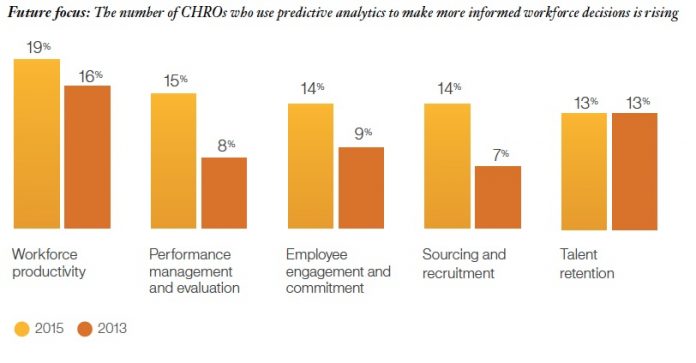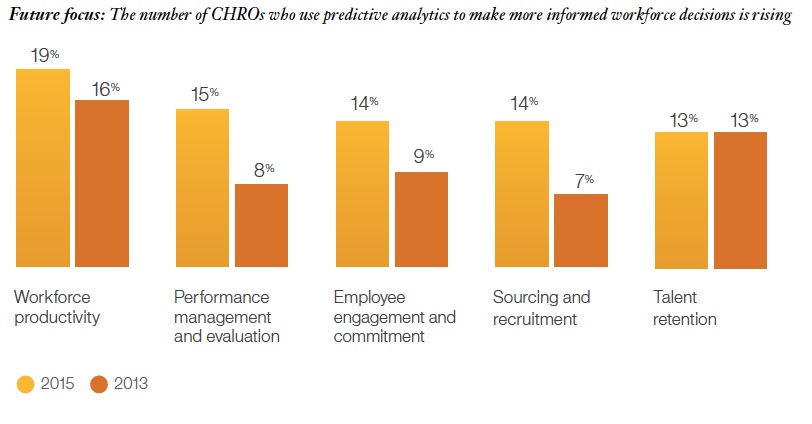
The number of Chief Human Resources Officers (CHROs) using predictive analytics to manage workforce issues has begun to rise, according to an IBM Institute for Business Value study, Redefining Talent: Insights from the Global C-Suite Study—The CHRO Perspective (ibm.com/csuitestudy), which draws on input from 5,247 C-suite executives. Building an effective analytics capability requires a cadre of new HR workers with different skills: data architects, statistical modelers, and storytellers. Most of all, the report notes, analytics requires a degree of trust between the HR function and the rest of the business.
Nevertheless, the report concludes, the benefits justify the investment and effort required. “Developing robust models to forecast dynamics such as employee turnover and future demand for specific skills helps an organization anticipate forthcoming workforce challenges.”


